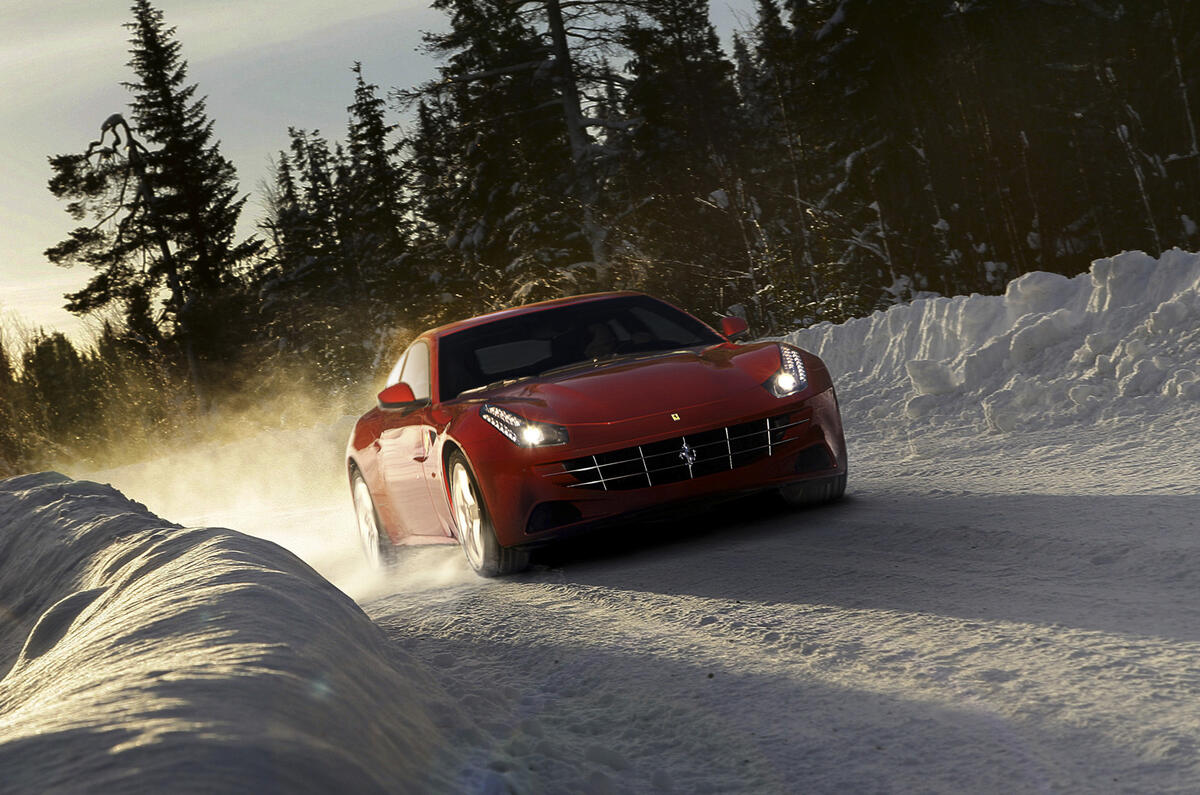Ferrari has revealed its first-ever production four-wheel-drive model at the Geneva motor show.
It's a front-engined V12 four-seater GT that not only replaces the 612 two-plus-two coupé but also aims to attract a new kind of “all-roads, all-weathers” Ferrari customer.
The new car, dubbed FF for its four seats and four-wheel drive, is designed by Pininfarina under the direction of Ferrari’s own chief designer, Flavio Manzoni.
The first Ferrari of modern times to accommodate four full-sized adults and their luggage, it will be unveiled at next month’s Geneva show, and go on sale soon afterwards.
See official pics of the Ferrari FF - now updated with Geneva show pics
Ferrari hopes it will appeal in particular to buyers who usually use all-wheel-drive saloons or SUVs for winter driving and especially ski trips at this time of the year.
The revolutionary Ferrari FF has an all-new, longer wheelbase chassis with a new design, all-independent suspension that incorporates the latest-generation magnetically adjustable dampers and standard Brembo carbon ceramic disc brakes.
The four-wheel drive system, claimed to be around 50 per cent lighter than comparable applications, preserves the desirable rear weight bias of recent V12 Ferraris. Called 4RM (for ‘Ruote Motrici’) the system is unique to Ferrari, using the car’s electronic systems seamlessly to direct torque to the front wheels when slippery conditions demand it, but mostly leaving the car in its desirable (and understeer-free) rear-wheel-drive state.
Though the Ferrari FF is more versatile than traditional Ferraris, Maranello counters any suggestions that it is “soft” by giving it a newly developed 6.25-litre V12 with just under 10 per cent more swept volume and 22 per cent more power than the 612, and a seven-speed double-clutch gearbox to replace the previous six-speed manual.
The Ferrari FF also gets the package of efficiency-building measures introduced in the California, including stop-start and smart charging to improve economy by about 10 per cent. The FF engine produces 650bhp at 8000rpm and 504lb ft of torque (up 16 per cent) at 5000rpm. Despite these higher outputs, CO2 output is dramatically slashed from 470 to 360g/km (23 per cent) while combined fuel consumption improves from a distinctly average 13.8mpg to 18.3mpg. The FF’s 0-62mph acceleration time of 3.7sec also undercuts the 612’s by 0.4 sec, while its 208mph top speed beats the 612 by about 10mph.




























Add your comment